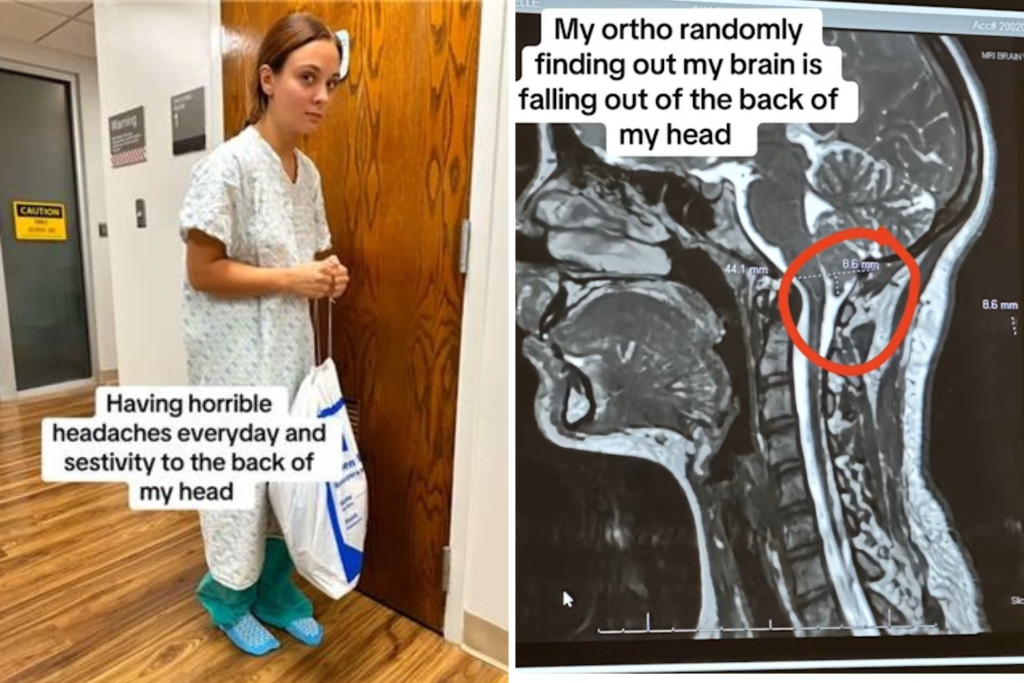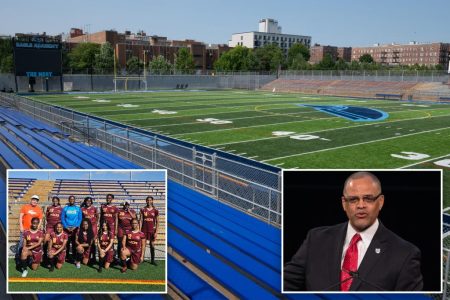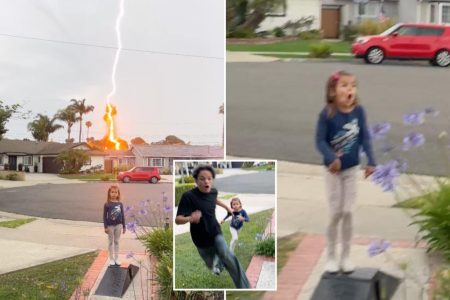Michelle Groeller’s summer of 2024 was marred by a persistent, debilitating headache that stretched over six weeks. This relentless pain prompted a series of medical investigations that ultimately unveiled a rare condition known as Chiari malformation, affecting fewer than one in 1,000 individuals. Groeller’s brain scans revealed that the lower part of her brain, the cerebellar tonsils, had descended into her spinal canal, a defining characteristic of this condition. This revelation came just a month after another diagnosis: Ehlers-Danlos syndrome (EDS), a group of genetic disorders impacting connective tissues. Groeller’s story, shared on TikTok, resonated with millions, highlighting the challenges of diagnosing rare conditions and the importance of patient advocacy.
Chiari malformation, characterized by the protrusion of the cerebellar tonsils into the spinal canal, can manifest in a range of debilitating symptoms, including severe headaches, neck pain, and various neurological issues. The pressure exerted by the displaced brain tissue on the spinal cord and the disruption of cerebrospinal fluid flow contribute to these symptoms. Surgical intervention, often in the form of craniocervical decompression, is a common treatment approach. This procedure aims to create more space within the skull and relieve pressure on the affected areas, alleviating symptoms and improving cerebrospinal fluid circulation.
Ehlers-Danlos syndrome, diagnosed in Groeller just a month prior to the Chiari malformation diagnosis, further complicated the clinical picture. EDS encompasses a spectrum of genetic disorders that weaken connective tissues throughout the body. This inherent weakness can lead to joint hypermobility and instability, particularly in the craniocervical junction where the skull meets the spine. This instability can predispose individuals with EDS, particularly those with the hypermobile type (hEDS), to Chiari malformation. The weakened connective tissues may allow the cerebellar tonsils to herniate more readily into the spinal canal, establishing a link between the two conditions.
Groeller’s journey with these intertwined conditions was marked by years of overlooked symptoms and misdiagnoses. Throughout her childhood and adolescence, she experienced a series of seemingly unrelated health issues, including a broken wrist, chronic hip and knee pain, and overall clumsiness. These symptoms, now understood as manifestations of EDS, were often dismissed as growing pains or attributed to simple accidents. The underlying connective tissue disorder remained undetected, leading to progressive joint damage and the development of Chiari malformation. This delayed diagnosis underscores the challenges of recognizing rare conditions, especially when symptoms are non-specific or mimic more common ailments.
The eventual diagnosis of Chiari malformation came after Groeller began experiencing additional symptoms, including numbness and the alarming leakage of cerebrospinal fluid from her nose and ears. A CAT scan revealed the downward displacement of the right side of her brain, confirming the Chiari malformation diagnosis. The cerebrospinal fluid leak, a serious complication, indicated a diminished volume of this vital fluid, leaving the brain and spinal cord vulnerable. This combination of factors – the Chiari malformation and the CSF leak – presented a complex medical challenge requiring specialized intervention.
Groeller’s case highlights the difficulties in diagnosing rare conditions like Chiari malformation. Many medical professionals lack familiarity with these conditions, leading to misdiagnosis or delayed diagnosis. The focus on individual symptoms rather than a holistic assessment of the patient’s health can further obscure the underlying cause, particularly in young patients. Groeller’s story emphasizes the critical need for increased awareness and education among healthcare providers regarding rare conditions and the importance of considering these possibilities when evaluating patients with complex or persistent symptoms. Her experience also underscores the vital role of patient advocacy in navigating the healthcare system and seeking appropriate care.










